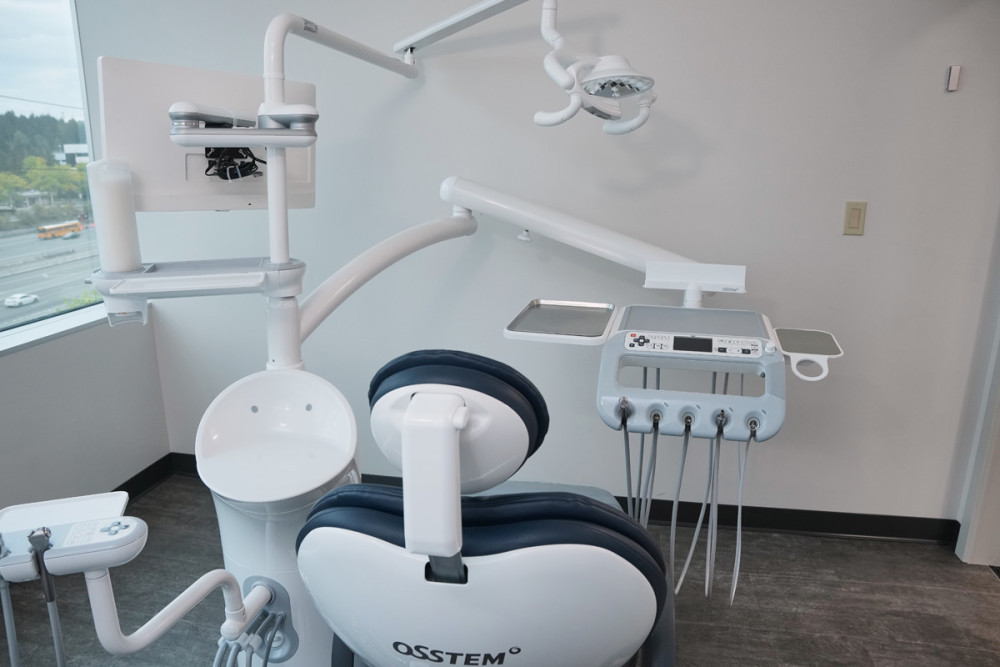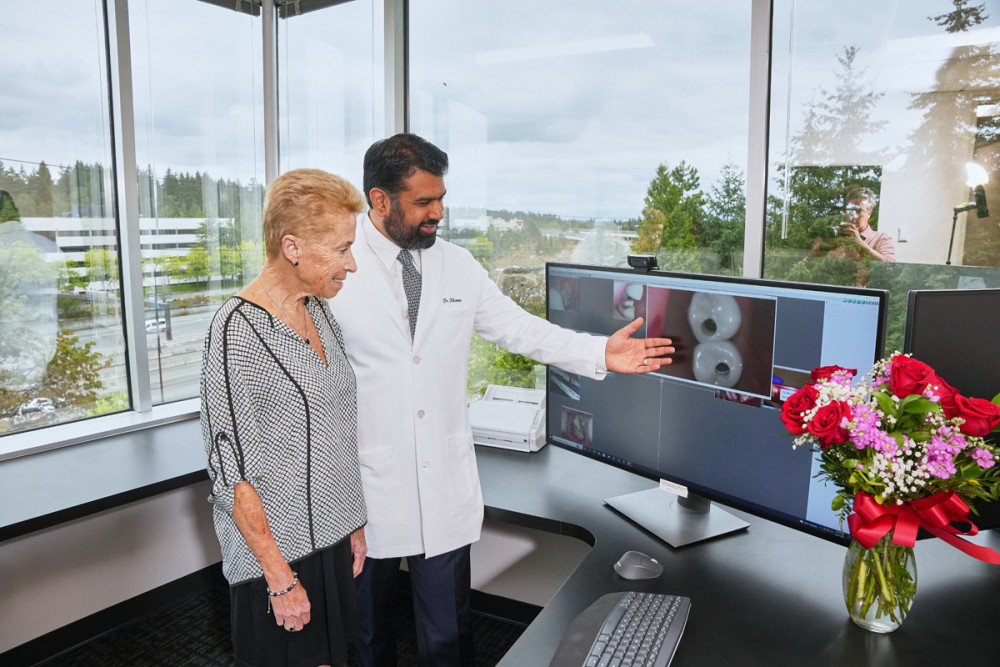Emergency Dentist Care Near Me Bellevue, Washington

Emergency Dentist Care Near Me: What Constitutes a Dental Emergency? Know the Signs and Symptoms
Imagine waking up in the middle of the night with excruciating pain radiating from your jaw. As you head to the bathroom mirror, you notice significant swelling on one side of your face. Panic sets in as you wonder, "Is this a dental emergency?" Many people find themselves in situations where they’re unsure if their dental issue requires urgent attention or can wait for a regular appointment. Understanding the signs and symptoms that constitute a dental emergency can save you from unnecessary worry and ensure you get timely care when it matters most. In this article, we’ll explore what defines a dental emergency and how to find emergency dentist care near me.
Severe Toothache: When Pain Signals Trouble
A severe toothache is often a clear indication that something is amiss and requires immediate attention. Unlike mild, fleeting discomfort that may arise from temporary sensitivity, a persistent and intense toothache signals deeper issues. The pain can range from throbbing to sharp and debilitating, interfering with daily activities and even disrupting sleep. This type of pain often suggests that the nerve of the tooth is inflamed or infected, which can occur due to untreated cavities, trauma, or gum disease. Ignoring these symptoms might lead to worsening conditions, such as abscesses or the spread of infection, making prompt dental evaluation essential.
In addition to intense pain, other symptoms often accompany a severe toothache, adding to the urgency of seeking professional dentist help. Swelling around the affected tooth or in the face and gums is a common sign of infection, which could be spreading. This swelling can create pressure and exacerbate pain, indicating a possible abscess—a pocket of pus caused by bacterial infection. Another concerning symptom is fever, which often accompanies severe dental infections. A high fever indicates that the body is fighting off a significant infection, necessitating immediate dental intervention to prevent further complications.
Furthermore, difficulty swallowing or breathing, coupled with a severe toothache, constitutes a dental emergency that cannot be ignored. These symptoms can indicate that the infection has spread beyond the tooth and gums, potentially affecting the throat and airways. In such cases, immediate dental care is crucial to avoid life-threatening complications. Other red flags include continuous bleeding, foul-tasting discharge from the tooth, or visible signs of damage like cracks or breaks. Recognizing and understanding these signs ensures that you seek timely and appropriate treatment, mitigating the risk of long-term damage and promoting quicker recovery. Being aware of what constitutes a dental emergency empowers you to act swiftly and effectively when severe toothache signals trouble.

Knocked-Out Tooth: Acting Quickly to Save Your Smile
A knocked-out tooth, or avulsed tooth, is among the most urgent dental emergencies, demanding immediate action to maximize the chances of saving the tooth. Swift and proper handling within the first hour is critical for successful re-implantation. If a tooth is knocked out, the first step is to remain calm and locate the tooth. Handle it by the crown (the chewing surface), avoiding the root to prevent further damage to the delicate cells necessary for reattachment. If the tooth is dirty, rinse it gently with saline solution or milk, but do not scrub, as this can remove the vital tissue fragments needed for re-implantation.
Once the tooth is clean, attempt to reinsert it into the socket if possible. Gently push it back into place, holding it by the crown, and bite down softly on a piece of gauze or cloth to keep it stable. If reinsertion isn’t feasible, keeping the tooth moist is crucial. Place it in a container with milk or saline solution, or tuck it inside your cheek, ensuring it stays hydrated. Avoid using plain water as it can harm the tooth’s cells. The key is to maintain the tooth's viability until you can get to a dentist. Immediate dental care is essential, as the longer the tooth remains out of the mouth, the lower the chances of successful re-implantation.
In addition to these steps, it’s important to manage any accompanying symptoms such as bleeding or pain. Apply gentle pressure with gauze or a clean cloth to control bleeding from the socket. Over-the-counter pain relief can help manage discomfort, but it’s vital to avoid placing medications directly on the gum area where the tooth was dislodged. Time is of the essence in these situations; prompt and correct actions significantly increase the likelihood of saving the tooth and restoring your smile. Recognizing the importance of acting quickly and effectively can make a substantial difference in the outcome of a knocked-out tooth emergency.
Broken or Chipped Teeth: Assessing the Damage
Broken or chipped teeth are common dental emergencies that require prompt assessment and appropriate care to prevent further complications. The severity of a break or chip can vary, ranging from minor cosmetic issues to significant structural damage. When a tooth is broken or chipped, the first step is to rinse your mouth with warm water to clean the area and remove any debris. If there's bleeding, apply gentle pressure with gauze or a clean cloth until it subsides. An ice pack can be used on the outside of the cheek or lips near the broken tooth to reduce swelling and alleviate pain.
Assessing the damage involves examining the extent of the break or chip and determining whether the tooth's nerve or pulp has been exposed. Minor chips that don't cause pain may not require immediate emergency treatment but should still be evaluated by a dentist to ensure there are no underlying issues. On the other hand, breaks that result in sharp edges, significant pain, or visible damage to the inner layers of the tooth warrant immediate attention. Exposed nerves or pulp can lead to intense pain and increase the risk of infection, necessitating urgent dental intervention.
In the interim, there are steps you can take to protect the damaged tooth before seeing a dentist. Covering any sharp edges with dental wax or sugarless gum can prevent cuts or irritation to the tongue and cheeks. Avoid chewing on the affected side to prevent further damage and stick to soft foods. Over-the-counter pain relievers can help manage discomfort, but it's crucial to see a dentist as soon as possible for a thorough examination and appropriate treatment. Depending on the severity, treatments might include bonding, crowns, or in severe cases, root canal therapy. Prompt assessment and care are essential to restore the tooth's function and appearance, ensuring long-term oral health.

Swelling and Abscesses: Recognizing Infection
Swelling and abscesses in the mouth are critical signs of infection that constitute a dental emergency requiring immediate attention. An abscess is a pocket of pus caused by a bacterial infection, often stemming from untreated tooth decay, gum disease, or a cracked tooth. If you notice a swollen area in your gums, face, or neck, it is a clear indication that an infection is present and potentially spreading. This swelling can cause significant discomfort and may be accompanied by other symptoms such as fever, throbbing pain, a bad taste in the mouth, or difficulty swallowing and breathing. These signs suggest that the infection is severe and needs prompt professional dentist services intervention to prevent serious health complications.
Recognizing an abscess early is vital for effective treatment. Typical symptoms include a persistent, intense throbbing toothache that radiates to the jawbone, neck, or ear. The affected tooth might also be sensitive to temperature changes and pressure. In some cases, you may notice a small, pimple-like bump on the gum near the infected tooth, which can occasionally rupture, leaking foul-tasting fluid. This discharge provides temporary relief from the pressure, but it does not eliminate the infection. If left untreated, the bacteria can spread to surrounding tissues and even into the bloodstream, leading to more severe conditions like cellulitis or sepsis.
Immediate dental care is essential to address the infection and alleviate symptoms effectively. Treatment typically involves draining the abscess to remove the pus and infected material, followed by antibiotics to eliminate any remaining bacteria. Depending on the severity of the infection, procedures like root canal therapy or tooth extraction might be necessary to remove the source of the infection. In the meantime, rinsing your mouth with a mild saltwater solution can help reduce swelling and pain. Managing infections promptly ensures that they do not escalate into more severe health issues, safeguarding your overall well-being and preserving your oral health. Recognizing the signs of swelling and abscesses empowers you to seek timely treatment and mitigate potential complications.
Bleeding Gums: Identifying Alarming Signs
Bleeding gums are a common symptom that can indicate an underlying dental condition, and in some cases, may constitute a dental emergency. While occasional bleeding from vigorous brushing or flossing may not be alarming, persistent or severe bleeding should not be ignored. When gums bleed frequently or spontaneously, it often signals issues such as gingivitis, periodontitis, or other systemic health problems. Gingivitis, an early stage of gum disease, results in inflammation and bleeding due to plaque buildup. If left untreated, it can progress to periodontitis, a more serious condition that can lead to tooth loss and other health complications.
Identifying the severity and cause of bleeding gums is crucial for determining the appropriate response. Accompanying symptoms like swollen, red, or tender gums, persistent bad breath, or a receding gum line are indicative of advanced gum disease. In more severe cases, abscesses and significant discomfort may also be present. Additionally, if bleeding gums are coupled with symptoms such as loose teeth, pus between the teeth and gums, or changes in bite alignment, it constitutes an urgent dental issue that requires prompt professional evaluation. These signs suggest that the infection has spread deeper into the supporting structures of the teeth, necessitating immediate intervention to prevent further damage.
To manage bleeding gums before seeing a dentist, maintaining good oral hygiene practices is essential. Gently brushing with a soft-bristled toothbrush and using an antiseptic mouthwash can help control plaque and reduce inflammation. Avoiding tobacco products and following a balanced diet rich in vitamins and minerals also supports gum health. However, these measures are supplementary and do not replace professional care. Seeking timely dental treatment is vital for diagnosing the root cause of bleeding gums and implementing effective solutions, such as professional cleanings, scaling, root planing, or other periodontal treatments. Recognizing when bleeding gums signal a dental emergency enables you to take swift action, ensuring better oral health outcomes and preventing more severe complications.

Loose or Lost Fillings and Crowns: Preventing Further Damage
Loose or lost fillings and crowns are dental issues that can lead to significant discomfort and further complications if not addressed promptly. Fillings and crowns are designed to protect teeth that have been damaged by decay or injury, so when they become dislodged or fall out, the affected tooth is left vulnerable. A loose or lost filling can expose the sensitive inner layers of the tooth, leading to pain, increased sensitivity to temperature changes, and a heightened risk of infection. Similarly, a missing crown can leave the underlying tooth structure exposed, making it susceptible to further damage and decay. Recognizing these issues as dental emergencies is crucial for preventing additional harm.
When a filling or dental crown becomes loose or falls out, the immediate goal is to protect the tooth until professional dental care can be obtained. Start by gently cleaning the affected area with warm water to remove any debris. If you can find the filling or crown, keep it safe and bring it to your dentist. In the case of a loose filling, temporary dental cement, available at most pharmacies, can be used to seal the cavity temporarily. For a loose crown, dental cement or even sugarless gum can help hold it in place until you can see your dentist. However, these are only temporary measures and should not replace professional treatment.
It's important to seek prompt dental care to properly address the issue and prevent further damage. A dentist will evaluate the condition of the tooth and the integrity of the existing restoration to determine the best course of action. This may involve replacing the filling or re-cementing the crown if it is still intact. In some cases, further treatment like a new filling, crown, or even a root canal might be necessary if there is significant decay or damage. By acting quickly and following these steps, you can minimize pain, prevent infection, and ensure that your dental health is properly maintained. Recognizing the urgency of loose or lost fillings and crowns helps you take swift action to safeguard your oral health and avoid more severe complications.
Soft Tissue Injuries: Addressing Cuts and Trauma
Soft tissue injuries in the mouth, including cuts, tears, and trauma to the gums, cheeks, lips, or tongue, constitute dental emergencies that need prompt attention to prevent complications. These injuries can occur from various incidents, such as accidental bites, falls, sports activities, or sharp objects. When soft tissue is damaged, it often results in significant bleeding, pain, and swelling. The rich blood supply to these areas means that even minor injuries can bleed profusely and appear more severe than they are. However, any injury that causes persistent bleeding, deep cuts, or severe pain should be evaluated by a dental professional to ensure proper care and to rule out more serious underlying issues.
Addressing soft tissue injuries involves immediate first aid to control bleeding and manage pain. Start by rinsing the mouth gently with warm salt water to clean the area and reduce the risk of infection. Applying pressure with a clean cloth or gauze can help control bleeding. If the bleeding does not stop after 10-15 minutes of firm pressure, it is essential to seek emergency dental care. For pain and swelling, applying a cold compress to the outside of the mouth or cheek can provide relief and reduce swelling. Over-the-counter pain relievers can also be used, but avoid placing pain medication directly on the affected area as it can cause further irritation.
While minor cuts and abrasions might heal on their own, deeper or more severe injuries require professional evaluation and treatment. A dentist can assess the extent of the damage, clean the wound thoroughly, and, if necessary, suture the area to promote proper healing. They will also check for any other related injuries, such as damaged teeth or bone fractures, that may not be immediately apparent. Timely intervention helps prevent infection, reduce scarring, and ensure that the injury heals correctly. Recognizing the signs and symptoms of soft tissue injuries and knowing how to respond can significantly improve outcomes and maintain oral health. Taking swift action to address cuts and trauma ensures effective treatment and quicker recovery, safeguarding your smile and overall well-being.
Conclusion
Recognizing what constitutes a dental emergency can make all the difference in preserving your oral health and preventing long-term complications. From severe toothaches and knocked-out teeth to swelling, abscesses, excessive bleeding, and lost fillings, understanding the signs and symptoms that necessitate urgent care is essential. By knowing when to act quickly and seek professional help, you can ensure that you receive timely and effective treatment, safeguarding your smile and overall well-being. Don’t let uncertainty keep you from getting the care you need—stay informed, stay vigilant, and be prepared to address dental emergencies with confidence.
Dentistry of Bellevue
https://www.google.com/maps?cid=9867356124298878902
14205 SE 36th St #365, Bellevue, WA 98006, United States
(425) 643-3912
dentistryofbellevue.com